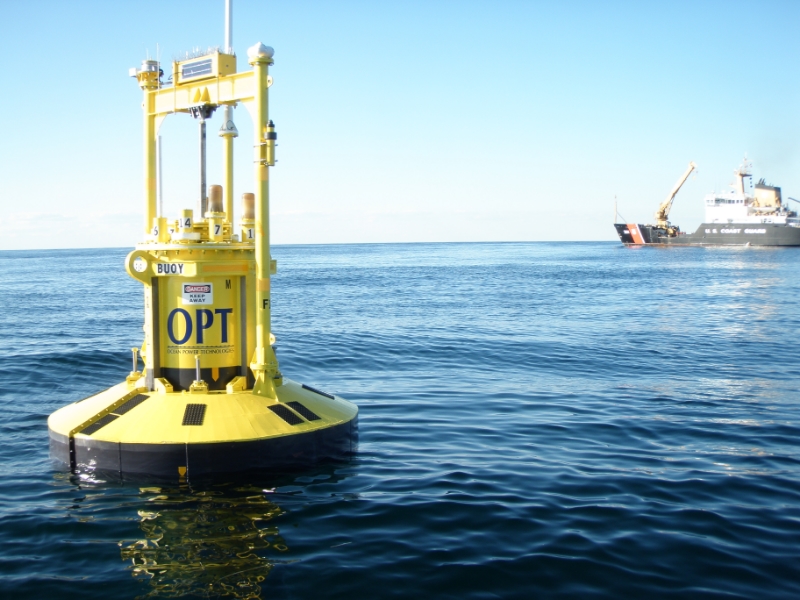The U.S. Environmental Protection Agency’s (EPA’s) plan to regulate carbon emissions is just the latest challenge facing the U.S. electric power system. Technological innovation is disrupting old ways of doing business and accelerating grid modernization. Earlier this year, AEE released Advanced Energy Technologies for Greenhouse Gas Reduction, a report detailing the use, application, and benefits of 40 specific advanced energy technologies and services. This post is one in a series drawn from the technology profiles within that report.

Marine power technologies generate electricity from the kinetic energy contained in moving water, including waves, currents, and tides. Wave power works by harnessing the fluctuations in wave height to generate electricity, for example, with a buoy tethered to the sea floor. As the buoy moves up and down with the waves the relative motion between it and the part that is fixed to the sea floor can be captured to drive a generator.
In places with the right undersea topography, daily currents created by ocean tides can be used to drive underwater turbines. Similar technology can be used with the constant flow of water in large-scale ocean currents like the Gulf Stream. In places with large tidal ranges, barrages can be built across estuaries. Water is allowed to flow in with the rising tide and let out via low-head hydro turbines as the tide recedes. Within each category there are many different devices being developed, particularly, for wave energy capture. Proximity to shore, ocean depth, and expected sea conditions are all considerations in the design of marine power technologies.
A zero emission power source, marine power is an emerging technology area, but the potential is great, as the ocean contains vast amounts of energy. The DOE estimates that the United States has the potential to develop about 50 GW of tidal power alone. Capturing just 0.1% of the Gulf Stream’s potential would be enough to supply 35% of Florida’s electricity needs. At this time, marine projects in the U.S. are principally for demonstration and testing purposes, but there is substantial interest in the technology. As of April 2014, FERC has issued six preliminary permits for 2,200 MW of electricity, while permits are pending for 15 projects totaling nearly 3,900 MW. One of the permitted projects is the Roosevelt Island Tidal Energy project in New York City (expected completion 2015), which will generate 1 MW of electricity.
